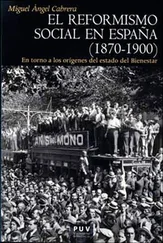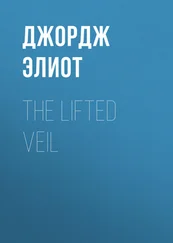The progression from the particular to the universal frames a movement that finds its meaning in present day experiences linked to migration, immigration, diaspora and new ways of communication through new technologies. I define this movement in communicative terms. Although I avoid the term global, I was tempted to resort to the term glocation to describe what Wendy S. Hesford and Theresa Kulbaga describe as “the interdependence of the local and global—how each is implicated in the other—and how the ‘local, private, and domestic are constituted in relation to global systems and conversely how such systems must be read for their particular location inflection’” (303). 5In fact, my position is closer to Holly YoungBear-Tibbetts’ concept of “home” as a negotiation of one’s own relationship to landscape within a frame that goes beyond the static idea of rootedness as opposed to the exercise of mobility: mobility enables relatedness and it contributes to demonstrate that identity is complex, fluid, and rhizomatic ( Making 36-37). In a wider context, it also offers a connection between different levels, dimensions and subject positions, especially between the writer and the reader.
In conclusion, by using the term universal, I do not intend to refer to an essential idealization that denotes meanings of authority and discursive elaboration. The term alludes to a non-physical space in which the processes of communication and cultural representation are built upon an agglutinating, critical and open perspective. Universal, here, is a concept with certain spiritual connotations and a dash of religious appeal, if only because the special characteristics of Barber and the culture in which her work is inserted are the focus of this research. Nevertheless, it is true that because I use this term in a literary context and because of Barber’s personal assumptions in favor of the artistic value of having a mediator between open-minded positions, the idea transcends religious limits to become something much more complex, something that reveals a secular interpretation of religious postulates. The crossing of that boundary is simply the natural place of Barber’s literature since, for her, the balancing of extremes is a fundamental struggle. It is also the natural space for this research. This is a project in which the skeptical look of a researcher who ventures into a very different culture, and the cryptic nakedness of a singular author, collide to offer an array of possible and motley interpretations and paradoxes.
From a personal perspective, these circumstances presented an unquestionable challenge to exercise open-mindedness and to embrace the unknown, as well as a vicarious self-reflecting catharsis. Some time near the end of my research, I came across a pregnant image that lit up the dark gaps of my consciousness. In the introduction to Worldviews and the American West: The Life of Place Itself , Polly Stewart, Steve Siporin, C.W. Sullivan III and Suzi Jones finish their introduction by paying homage to their former mentor, Barre Toelken who, they explain, brilliantly played with the icon of the moccasin to illustrate what it meant to deal with folklore. As they explain, Toelken once wrote that “walking in someone else’s moccasins is not just a cliché or an item of pseudo Indian lore” (Stewart 5). They then develop their explanation, adding that:
For traditional Navajos this idea conveys a deep meaning partly because the word for “moccasin” and the word for “foot” are the same word, and one’s moccasin is shaped by one’s foot. So to walk in someone else’s moccasins is not only to experience the world as someone else does, but to adopt part of that person as yourself for a while, and perhaps to let go of part of yourself for a while too. (Stewart 5-6)
On this journey, I have often felt as if I were wearing somebody else’s shoes and, whether moccasins or not, they sometimes felt like they fit perfectly, while at other times they hurt my feet, causing significant pain. 6In any case, I always felt that taking that path and walking forward would finally make it appropriate for me to wear a new pair of borrowed shoes. If the Mormon version of what Toelken called worldviews, “the manner in which a culture sees and expresses its relation to the world around it” (Stewart 1), is so particular and singular, I still learn that moccasins are flexible and adaptable, that there are universal elements that add coincidences which become an appropriate zone of tension in which to experience and test the relationships and connections favored by literature. On that point, I was the one to benefit, but I also think that this is beneficial to Mormons, because, as Mikhail Bakhtin says:
In the realm of culture, outsideness is a most powerful factor in understanding. It is only in the eyes of another culture that foreign culture reveals itself fully and profoundly (but not maximally fully, because there will be cultures that see and understand even more). A meaning only reveals its depths once it has encountered and come into contact with another, foreign meaning: they engage in a kind of dialogue, which surmounts the closedness and one-sidedness of these particular meanings, these cultures. We raise new questions for a foreign culture, ones that it did not raise itself; we seek answers to our own questions in it; and the foreign culture responds to us by revealing to us its new aspects and new semantic depths. Without one’s own questions one cannot creatively understand anything other or foreign (but, of course, the questions must be serious and sincere). Such a dialogic encounter of two cultures does not result in merging or mixing. Each retains its own unity and open totality, but they are mutually enriched. (Bakhtin 7)
My view is that of an outsider. An international perspective which follows what Frank Bergon calls “a more challenging task” (Bergon, Basques 58) in reference to the international perspective of scholars from different backgrounds in approaching Western American literature. Bergon considers that “a novel becomes a different thing when read in such an international context rather than just a regional one” (Bergon, Basques 58). In that sense, my analysis, even though it conceives of all the specific and particular characteristics of Mormonism, consciously aims at widening all viable interpretations beyond a perspective biased by distance, education and what Toelken calls “worldview.”
In summary, Barber’s literature is meaningful to Mormons who understand the context and the nature of her stories, but it also provides a new perspective for those interested in the Western experience. In fact, it is valuable to anyone interested in human feelings and the conflicts engendered by the clash that can occur between the individual and the community.
Barber is experimental and “highly impressionistic” 7(Anderson, Masks 1). Her elaborate style occasionally uncovers the seams and labor of her lyrical and poetic flair. Furthermore, since her imagery and symbolism derive from Mormon culture and folklore, what she tries to communicate through her writing often becomes so inaccessible, overly artistic and intricate that it cannot be directly or fully understood. Thus, the greatness and applicability of her message loses power. The effort required to understand her images and metaphors takes the reader beyond what seems to be addressed to Mormons, transforming the text into one that is totally pertinent and suitable to the outsider who can still identify with Barber’s individual experience, emotions and meanings: all of which illustrate the universality of human longings and expectations. This emphasis is consciously attained since Barber, as a writer, both longs for and cares about this target: “Do you reach out to the LDS society alone, or does your essential gesture include a desire to build a bridge between cultures and explore the universals?” (Barber, Writing xviii). Barber not only builds those bridges (that she then crosses) between cultures but, on a personal level, this focus works as a moral statement that opens blunt and analytical perspectives. Barber’s moral approximation to literature resides in her conceptual rendition of literary quality, her trip back to the inner aspects of a literature that is—or should be—based on “the third dimension” (Barber, Writing XV). That dimension where good and evil are swapped around, where the writer sticks to her own biases in order to reflect on them by portraying them in fictional characters, then showing a complexity that allows for no conclusions: “You suspect if you want to write something that matters, you need to examine the biases in your characters which can be understood only after reflecting upon the biases in your own character” (Barber, Writing xv). This source is so basic, so primary, and so deep that it adds a universal flavor to Barber’s ability to construct her topics. While Harrell thinks that Mormon writers need “to be more honest about the sins and shortcomings among us” (93), Barber’s own definition of identity as a matter of biases allows for contradiction, complexity, conflict and unattainability. This complex dichotomy produces a space that allows her to portray good and evil in a wide array of degrees.
Читать дальше












